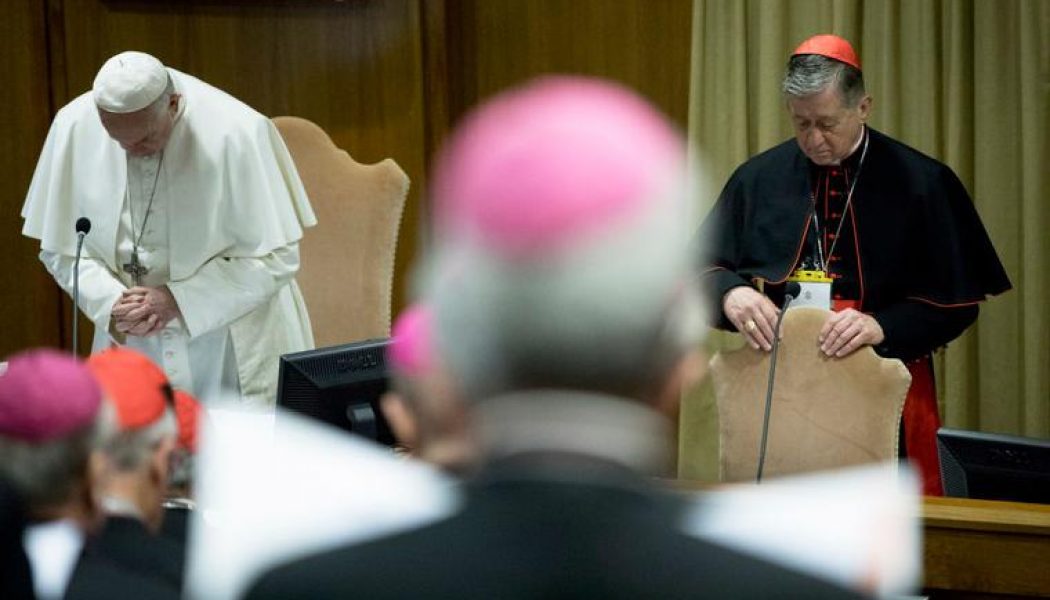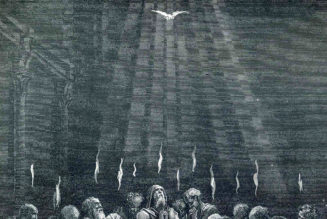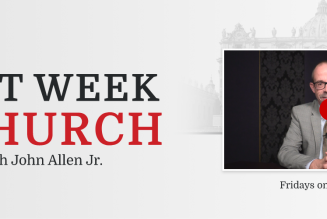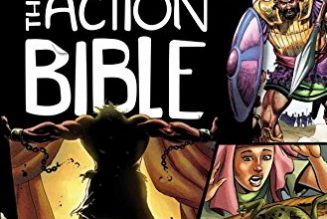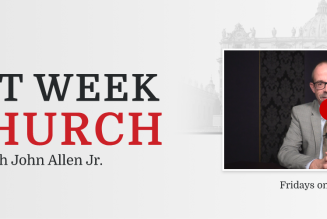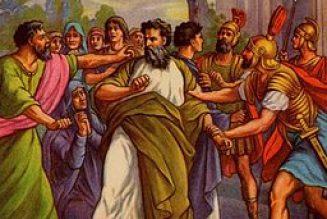
Much was made of Cardinal Blase Cupich’s meeting with Pope Francis, just 10 days after his public criticism of the inauguration day statement of Archbishop José Gomez, president of the U.S. bishops’ conference.
What did the meeting mean? A reliable guide to the thinking of the inner circle of Pope Francis is America magazine’s Gerard O’Connell, a long-time Vatican reporter who has become a most useful court stenographer of the current pontificate, providing annotated press releases when needed to stress what the Holy Father wants stressed.
O’Connell wrote that the point of the publicized meeting was to show that Cardinal Cupich is the Pope’s man in the United States, and that Archbishop Gomez was offside with papal priorities.
More analysis was provided here by Joan Frawley Desmond, who noted that it is hardly news that Cardinal Cupich is the Pope’s man in the U.S.; she rehearses all the papal favor heaped upon him.
Despite all that, Cardinal Cupich has not proved particularly successful in persuading his brother bishops to follow his lead. Indeed, Desmond illustrates that Cupich has always been something of an outlier and even after six years in Chicago, remains such.
It might help to consider Cardinal Cupich’s current situation in a broader context. First, what it means to be the “pope’s man” in a certain country. Second, from the point of view of Archbishop Gomez, what it means to be perceived as offside with the pope’s priorities.
Picking the Pope’s Man
When Bishop Blase Cupich was elevated from Spokane to Chicago in 2014, contrary to many expectations, it was widely recognized that, 18 months after his election, Pope Francis had used his first major appointment to give new direction to the Church in the United States. That is not only the Pope’s prerogative, it is to be expected. In a large and complex country, the Holy Father needs a local proxy, as it were, to reflect and bear witness to his priorities.
Perhaps the best example of this was the even more surprising elevation of Bishop John O’Connor from Scranton, Pennsylvania, to New York in 1984 by Pope St. John Paul II.
Coming from a career in the military chaplaincy, Cardinal O’Connor had only been in Scranton seven months when John Paul chose him for the most prominent see in the country.
In short order, Cardinal O’Connor would become the exemplar of the John Paul bishop in the United States — even if at times it would put him at odds with the leadership of the USCCB. So it is not at all news, nor even troublesome, that Cardinal Cupich, the Francis bishop, might find himself in a similar situation.
The more relevant question is whether Cardinal Cupich has been as effective in his role as Cardinal O’Connor was in his. It appears not, according to Cardinal Cupich’s own complaints about his lack of influence.
That might be why there was reported speculation that Cardinal Cupich’s meeting with Pope Francis was about him being given an influential Vatican post — perhaps prefect of the Congregation for Bishops. If the pope’s man in America is not getting the job done, then perhaps better to be the man handling jobs for the pope in Rome.
Popes appoint a lot of bishops. In 27 years, John Paul appointed almost everybody. But only a few can be said to capture the essence of the pontificate’s program, and it is why they matter, as do their successes or failures. Alongside O’Connor in New York, John Paul had Cardinal Jean-Marie Lustiger in Paris — also elevated after a short tenure in a small diocese — Cardinal Camillo Ruini in Rome and Cardinal George Pell, first in Melbourne and then in Sydney. Those prelates definitively shifted the ecclesial culture in their respective countries.
From O’Connor/Neuhaus to Cupich/Martin
In the United States, certain prelates capture the essence of a pontificate. Cardinal Cupich is for Pope Francis what Cardinal O’Connor was for John Paul and Cardinal Francis George was for Benedict XVI. It’s not a matter of office as much as moral authority, leadership skills, theological depth, charisma, intellect and an esteem which is earned not granted by mere office.
John Paul had no need to pump up Cardinal O’Connor, the heroic pastor and pro-life witness, with special audiences, nor did Benedict need to bestow special favor upon Cardinal George’s project of the evangelization of culture, with a priority for truth and beauty.
That can be extended too to prominent interpreters. Among priests Father Richard John Neuhaus was for John Paul an influential interpreter and intellectual advocate. Then-Father Robert Barron did much the same for Benedict. For Pope Francis that role has fallen to Jesuit Father James Martin.
Cardinal Cupich’s frustration over the inauguration may be in part because the Cupich/Martin advocacy for the pastoral priorities of Pope Francis has not yet had the impact that O’Connor/Neuhaus and George/Barron had. Both Cardinal Cupich and Father Martin have been granted high-profile papal audiences with Pope Francis to assist them in their work; the question is whether the Holy Father is pleased with the results of the investment he has made in them.
Offside With Rome?
Cardinal Cupich’s audience in Rome was, according to O’Connell, a clear sign of papal disfavor with Archbishop Gomez. What should Archbishop Gomez think about that?
Whatever he thinks, he is accustomed to it. The Los Angeles archbishop, the first Mexican-American head of the largest diocese in the United States and the premiere global proponent of the twin Francis priorities of pro-life and immigration, has been passed over so often for cardinal that the whole world knows that the Holy Father does not favor him. As red hats are given to some bishops whose entire dioceses are smaller than a single parish in Los Angeles, the signal is clear. That the president of the USCCB is not favored by the Holy Father is not news; the news is that the bishops of the United States chose him as their leader knowing that.
In a broader context, it is quite normal for courageous and admirable bishops in different parts of the world to find themselves offside with the priorities of Pope Francis.
For years, as Pope Francis has favored accommodating, if fruitless, dialogue with tyrannical regimes in Russia/Ukraine, Venezuela and China, local bishops have been the ones who have taken a more critical, challenging and courageous line.
When President Xi in Beijing takes heavy criticism from Cardinal Joseph Zen in Hong Kong and Cardinal Charles Maung Bo of Myanmar, he knows that he can count on countervailing silence in Rome. When President Vladimir Putin has to contend with resistance from both Catholics and Orthodox in Ukraine over his invasion, he knows a friendly reception awaits him at the Vatican. When Cardinal Jorge Urosa and Cardinal Baltazar Porras denounce the starvation tyranny of the Maduro regime in Venezuela, Maduro himself appeals to them to listen instead to the more soothing words of Pope Francis.
President Joe Biden is not an authoritarian head of an evil regime, but the dynamic will not be altogether different. As his radical abortion policy faces criticism from the U.S. bishops, led by Archbishop Gomez, he looks to the Holy Father to provide him cover. That’s why he put a photo of Pope Francis with the family photos behind his desk in the Oval Office, even as he signs executive orders promoting abortion abroad and restricting religious liberty at home.
Historically, Archbishop Gomez finds himself in good company. The single greatest churchman of the 20th century, save for his “junior” partner, a certain Karol Wojtyła, was the soon to be beatified Cardinal Stefan Wyszynski of Warsaw, who battled the communists as Primate of Poland for 33 years, 1948-1981. He found himself at odds with Vatican policy for much of that time. First, under the Venerable Pius XII, when senior Roman officials thought that he was too accommodating, and then later, under St. Paul VI, when the Vatican thought him not accommodating enough.
Papal favor is not equivalent to wise pastoral leadership.
Join Our Telegram Group : Salvation & Prosperity
